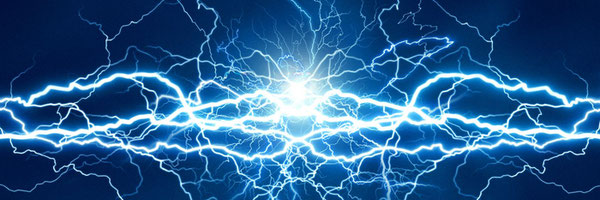Efficient Electricity
Grade 6
Presentation
No video provided
Hypothesis
We think that Direct Current (DC) is more efficient because it does not alternate from positive charge to negative charge. Therefore it does not lose as much energy to electromagnetic fields.
Research
Alternative Current (AC): Alternative current is one of the two main types of electricity. It is most commonly used in power transmission. The electrons don't like to stay in one charge and thus switch from positive to negative periodically.
Direct Current (DC): Direct current is the other main form of electricity. Power transmission for DC, is a lot easier than AC, making it more efficient during transmission. unfortunately, DC costs a lot more money. For example, the Alberta government spent 1.8 billion dollars on building a DC transmission line from Edmonton to Calgary. DC's electrons only move in one direction, making it hard to change the voltage. Therefore, we can not have the whole grid being DC.
Variables
Manipulated variables: One of the circuits released High Voltage Direct Current (HVDC) The second circuit released High Voltage Alternating Current (HVAC) The brands of batteries (HXD or Walmart brand) Types of measuring devices( Multimeter and Telus Spark power supply)
Controlled Variables: AA Batteries, 3 volts input, Alligator clips, Aluminum foil tape.
Responding Variables: High Voltage Generator Circuits, Brand of Batteries
Procedure
- We first extracted the boost circuits from the bug zapper racket, one produced AC current the other produced DC current.
- We then connected each of them to a battery.
- Using a multimeter we measured how much electricity each of them needed to operate.
- Then we went to Telus spark to use the power supply there this way we could ensure true results.
- Finally we observed what we have done and wrote it down in our logbook
Observations
AC Experiment Data:
HDX Batteries = First Attempt 24.41, Second Attempt 24.01, Third Attempt 23.61
Walmart Batteries = First Attempt 29.15, Second Attmept 28.97, Third Attempt 28.77
Telus Spark = First Attempt 3.584, Second Attempt 3.562
DC Experiment Data:
HDX Batteries = First Attempt 24.91, Second Attempt 24.54, Third Attempt 24.13
Walmart Batteries = First Attempt 29.39, Second Attempt 29.22, Third Attempt 29.02
Telus Spark = First Attempt 0.544, Second Attempt 0.521
Analysis
- We observed that each time we measured, the voltage decreased both in AC circuit and DC circuit.
- There was drop of 0.40 Volts in AC circuit while in DC circult we observed a drop of only 0.17
- The major change in environment was moving the experiment to Telus spark to use a different power source.
- We noticed that during the experiment, AC circuit showed changing numbers on the multimeter.
- The contact on the circuit was degrading forcing us to use aluminum foil tape.
Conclusion
In conclusion, our experiments and research found that our hypothesis was correct and as such the Government of Alberta has already built a DC power grid from Calgary to Edmonton. However, Alberta and most of the scientific community are still debating whether or not our grid should go fully DC. We hope that the DC power wins and makes our grids more efficient. Therefore giving us more time to find more renewable sources of electricity.
Application
Our idea could be applied in many ways:
One way would be to make a DC transmission grid and transmit electricity 100% via DC.
another way could be to use DC for long distance transmission while AC could be used for short distances.
Sources Of Error
Inability to measure the raw output of the circuit due to the fact that we don't have engineer grade materials.
It is possible that the Telus Spark power supply was compromised due to the fact that others could have been using the same electricity changing the results.
The Aluminum tape was not ensuring full contact to the circuit making it much harder to measure and possibly changing the results.
We had to reuse the same batteries after each experament because we did not have enough of them. This made it very difficult as we had to measure the DIFFRENCE of the numbers not the numbers themslevs.
Citations
https://www.researchgate.net/figure/AC-vs-DC-transmission-cost-comparison_fig3_320957010
https://www.cencepower.com/blog-posts/line-losses-power-transmission-3-types#:~:text=Capacitive%20Line%20Losses,in%20the%20form%20of%20heat.
https://learn.sparkfun.com/tutorials/alternating-current-ac-vs-direct-current-dc/all
https://savree.com/en/encyclopedia/synchronous-ac-generators
https://www.batterymart.com/c-aa-batteries.html
https://www.astroai.com/product/Astroai-Digital-Multimeter-Trms-6000-Counts
How Much Energy Is Lost in Power Transmission Lines? - (2023 Guide) (energysanity.com)
Difference between HVAC and HVDC Transmission Systems (tutorialspoint.com)
Alberta power grid gets stronger with new direct current transmission lines | Edmonton Journal
Acknowledgement
Maureen Saunders, Neemat Rajan, Shahal Rajan, Jessie Kim, Daniel Rha

